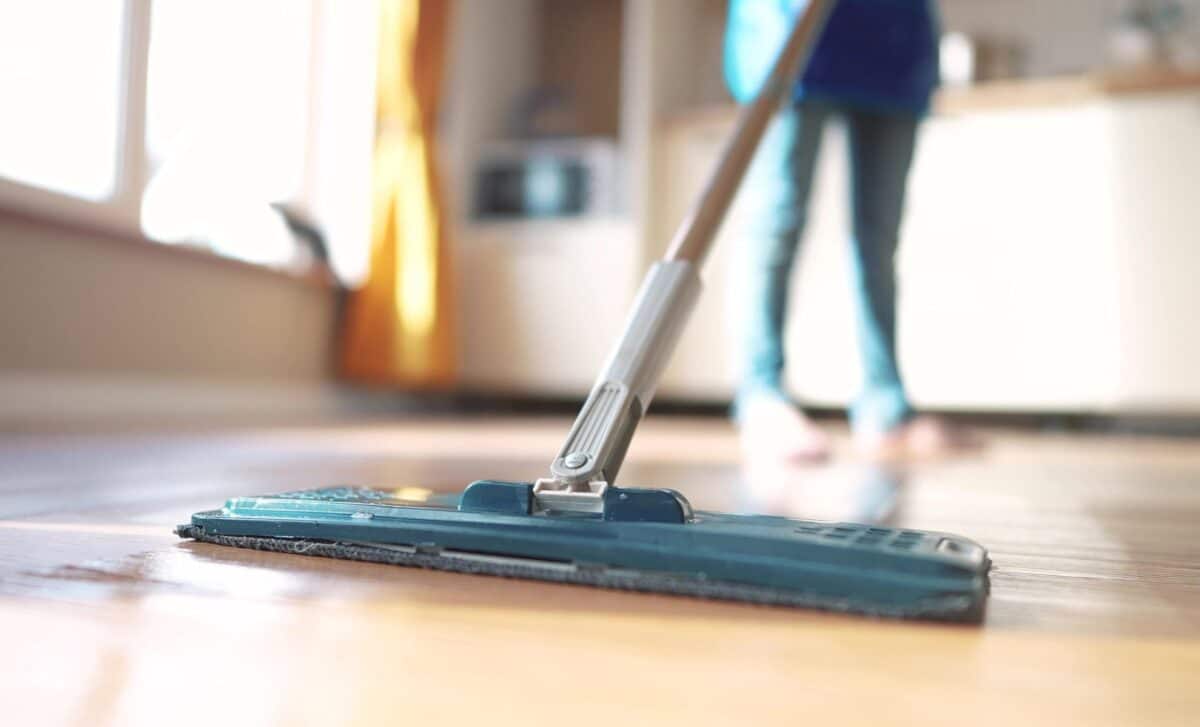We love a good Swiffer moment. Quick cleanups? Check. No buckets? Even better. But while Swiffer WetJets and wet pads feel like the ultimate cleaning hack, they’re not exactly universal. In fact, using them on certain surfaces could slowly ruin your floors—or even your electronics.
So before you swipe that pad across every inch of your home, make sure you know which surfaces could be at risk.
Unfinished Wood And Water Don’t Mix
If your wood floor has that raw, rustic vibe, it probably doesn’t have a sealant. That means it’ll absorb moisture like a sponge—which is exactly what Swiffer pads deliver. The result? Warping, swelling, and sometimes even cracks.
What you should do instead is grab a dry microfiber mop or a soft broom. For spills, use a barely damp cloth with a cleaner specifically designed for untreated wood.
Taylor Swift Just Got Engaged—Fans Are Losing It Over Her $550,000 Engagement Ring
Concrete Floors Aren’t Invincible
Yes, concrete looks industrial and tough—but if it’s sealed or polished, it’s surprisingly sensitive. The smooth, sleek finish you see is often thanks to a protective sealant, which doesn’t play well with harsh or alkaline cleaners.
Swiffer’s solution, with its high pH, can slowly eat away at that barrier. Over time, this wear can lead to dull patches, uneven texture, and an increase in porosity—meaning your floor starts soaking up stains like a sponge.
To keep your concrete floors looking sharp and stain-free, it’s best to go with a pH-neutral cleaner and apply it with a microfiber mop. Focus on low-moisture techniques: no puddles, no soaking, just a light pass and you’re done.
Why Your Sleek Floors Aren’t Vibing With Your Swiffer
Bamboo flooring might look as tough and polished as traditional hardwood, but under the surface, it’s a lot more sensitive than it seems. As a grass-based material, bamboo reacts poorly to both moisture and high-pH cleaners—two things the Swiffer WetJet delivers in abundance. Over time, using it too often can lead to a dull finish, warping around the edges, or that dreaded soft-spots-underfoot feeling. The same goes for floors treated with a wax or oil finish, which require much gentler care.
If you want to keep these floors looking sharp, stick with a dry dust mop for everyday cleaning. For deeper cleans, use a lightly damp microfiber cloth paired with a cleaner designed specifically for bamboo or oil-treated wood. And always, always follow up with a dry cloth to soak up any lingering moisture. These floors can be beautiful and durable—as long as you treat them with the TLC they deserve.
Cork Floors Soak Up Trouble
Soft, comfy, and eco-friendly—cork flooring has a lot going for it. It adds warmth underfoot, dampens noise like a pro, and brings a natural charm that’s hard to beat. But despite all those good vibes, cork has one big weakness: it’s super porous.
That means it tends to soak up moisture and cleaning chemicals like a sponge, which can lead to swelling, stains, or permanent surface damage if you’re not careful.
To keep your cork floors looking fresh without wrecking them, it’s best to keep things low-moisture and gentle. Use a dry microfiber mop for everyday cleaning—it’s perfect for picking up dust without any risk. For the occasional deeper clean, go with a barely damp cloth and a pH-neutral cleaner that’s labeled cork-safe.
Avoid soaking the floor or letting any liquid sit for too long. And if your cork starts to look a little tired over time, a fresh layer of sealant can bring back the protection and help extend its life. It’s all about treating cork like the sensitive natural material it is.







